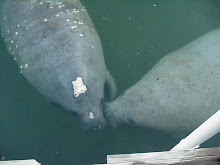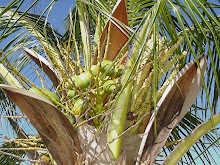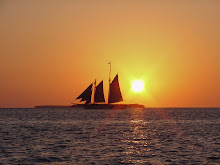Breakfast is on our own once more...it will be an early breakfast because our first conference meeting of the day starts at 8 AM. The main speaker will be John Franklin, Director of Partnerships and International Programs of the Smithsonian Museum in Washington, D.C. He tells us about the Smithsonian's new museum that is up and coming, the National Museum of African-American History and Culture. It will open in 2015 on The Mall, near the Washington Monument.
Our little museum and the other museums in the Florida African-American Heritage Preservation Network will be working with the Smithsonian. The materials and information we have in our museums will be passed along to the Smithsonian and be used to tell Florida's African-American history. The Colonel and I think it is exciting for our museum to be in a partnership with the Smithsonian.
May 20th is the day Florida celebrates Emancipation Day.
On January 1, 1863, President Lincoln issued the final Emancipation Proclamation ending slavery, but it was not until May 20, 1865 that the word reached Florida and border states still in rebellion.
The Proclamation was read on the steps of the Knott House in Tallahassee on May 20, 1865 by Union General, Edward Moody McCook.
Our conference group will visit the Knott House and watch a reenactment of the reading later that day...but first we had other places to visit.
After our morning conference meeting with Mr. Franklin we all once again boarded the trolley to visit more sites and take part in the Emancipation Day celebrations.
Our first stop of the day was to the Old City Cemetery (1829) and the decoration of the Union Soldiers' graves. Many local school children participated in the event.




It was a beautiful ceremony and great to see all of the children participating.
Back on the trolley to visit the Gov. David S. Walker Library (1883). Gov. Walker donated the building and his own private library so that it could be used by the public (blacks excluded, remember the Carnegie library located at FAMU) and it was the only public library in Tallahassee from 1884-1955. It is a small building.

 We then walked to the Knott House. It was basically across the street from the library.
We then walked to the Knott House. It was basically across the street from the library. We watched the reenactment of the 1865 reading of the Emancipation Proclamation.
We watched the reenactment of the 1865 reading of the Emancipation Proclamation.
After the reading, drums were played. The beat was an African one. Drum beating like this took place after the 1865 reading too.
 There was a free Bar-B-Que lunch for all in the park across the street.
There was a free Bar-B-Que lunch for all in the park across the street.When we finished our lunch our conference group got back on the trolley and made our way to the Riley House Museum to view their new exhibit entitled, Colored Soldiers on America's Battlefields. The Colonel supplied the Riley House Museum with material for the exhibit. The Riley House is part of the same network as our museum.
 The house was built in 1890 by John G. Riley (1857-1954). He was born a slave and against the law, secretly learned to read and write. After slavery he became an educator and civic leader. He was the principal of the first black high school (Lincoln Academy) in Leon County, Florida.
The house was built in 1890 by John G. Riley (1857-1954). He was born a slave and against the law, secretly learned to read and write. After slavery he became an educator and civic leader. He was the principal of the first black high school (Lincoln Academy) in Leon County, Florida. After the museum experience the network group had a one hour discussion in the hotel's lobby, on expanding our cultural heritage experiences. Then we all caravaned to a "Cultural Feast Under the Stars".
We dined in Frenchtown, one of Tallahassee's oldest African-American neighborhoods. It is a small neighborhood that is being revitalized. A woman who lives there and is an artist, set up a tent in her art shop's back yard and served us delicious "soul food". We had bourbon chicken, collard greens, creamed corn (nothing like the canned version), sweet potatoes, peel and eat shrimp, raw oysters (The Colonel and I did not have any), peach cobbler, sweet tea and red or white wine from FAMU. Soul food is just another word for down home cooking like most of our grandma's cooked.


Here are some of the cute houses in Frenchtown.



What a delicious cultural dinner. Thanks to Annie Harris of ASH Gallery.
The Colonel and I went on an impromptu tour with a small handful of the network members. One member was originally from St. Maarten, one from The Bahamas, one a three-time mayor of a small Florida town (she as a hoot) and the last, the head of the Rosewood project.
We drove to the oldest bank building in Florida, the Union Bank.
 The bank was built in 1841 and organized by white planters. The bank president was John Gamble of the Gamble Plantation fame. Due to failed crops and troubles with the Seminole Indians, the bank failed in 1843. In an ironic twist of fate, the defunct bank of white planters, became the Freedman's Savings and Trust Company in 1869. Since then it has been a church, shoe shop, bakery, feed store, newspaper office and a beauty parlor. It now houses the downtown branch of Florida A&M University (FAMU) Black Archives, Research Center and Museum. It was small inside, but beautiful. The wood floors and wood work on the walls was gorgeous.
The bank was built in 1841 and organized by white planters. The bank president was John Gamble of the Gamble Plantation fame. Due to failed crops and troubles with the Seminole Indians, the bank failed in 1843. In an ironic twist of fate, the defunct bank of white planters, became the Freedman's Savings and Trust Company in 1869. Since then it has been a church, shoe shop, bakery, feed store, newspaper office and a beauty parlor. It now houses the downtown branch of Florida A&M University (FAMU) Black Archives, Research Center and Museum. It was small inside, but beautiful. The wood floors and wood work on the walls was gorgeous.Our St. Maarten driver took us on a little driving tour of some of Tallahassee's newer homes and neighborhoods. The houses were huge and looked very antebellum. We all wondered what these people did for a living.
It was getting dark and late, so back to the hotel to sleep and rest up for our last busy day in Tallahassee the next day.



































Another wonderful trip through your eyes sister...K
ReplyDeleteYou ate creamed corn????!!!!
ReplyDelete